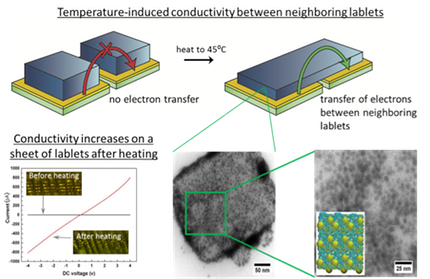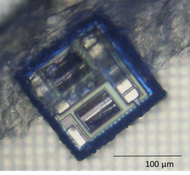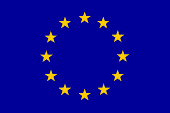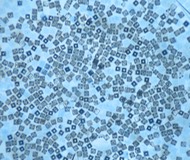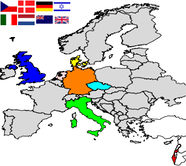The electrical linking of two lablets or docklets together as a response to a temperature stimulus can provide an additional dimension to the computing powers of the proposed chemical computation device. To accomplish this, we have developed a strategy to trigger communication between neighboring lablets using a temperature-activated switchable coating.
The coating that we use is a waxy substance that is made up of three components. Two of these components—short strands of DNA and cationic surfactants—are oppositely charged and when mixed together, will interact to form ordered arrangements (layers, in our case) within a material. At a specific temperature, such a material can also flow like a liquid while maintaining some internal organization. This class of materials is called a “liquid crystal.” In our design, the DNA that makes up the liquid crystal is linked to the third component—gold nanoparticles—to improve the conductivity of the material.
By depositing our material onto the lablets and delivering a high-temperature pulse, the liquid crystal coating on neighboring objects will melt together, providing the electrical connection between the objects. One benefit of using our material over other meltable electrical conductors is that the melting point of this material is only 45⁰C, which is above room temperature but far below the melting point of most commonly used conductors. We have verified that we can control the conductivity on a sheet of lablets coated with DNA-nanoparticle-surfactant liquid crystal just by heating the sheet to 45⁰C (see figure).
